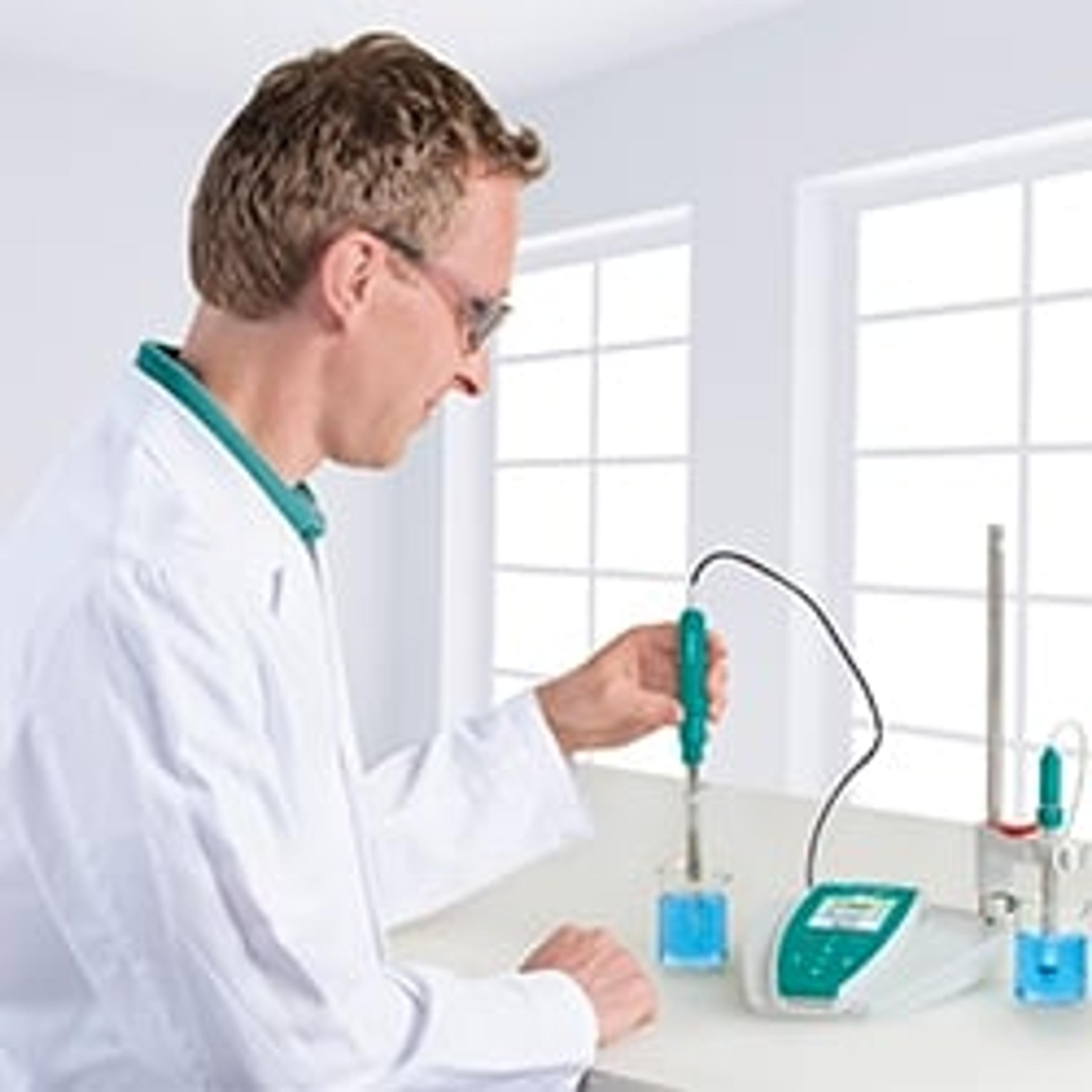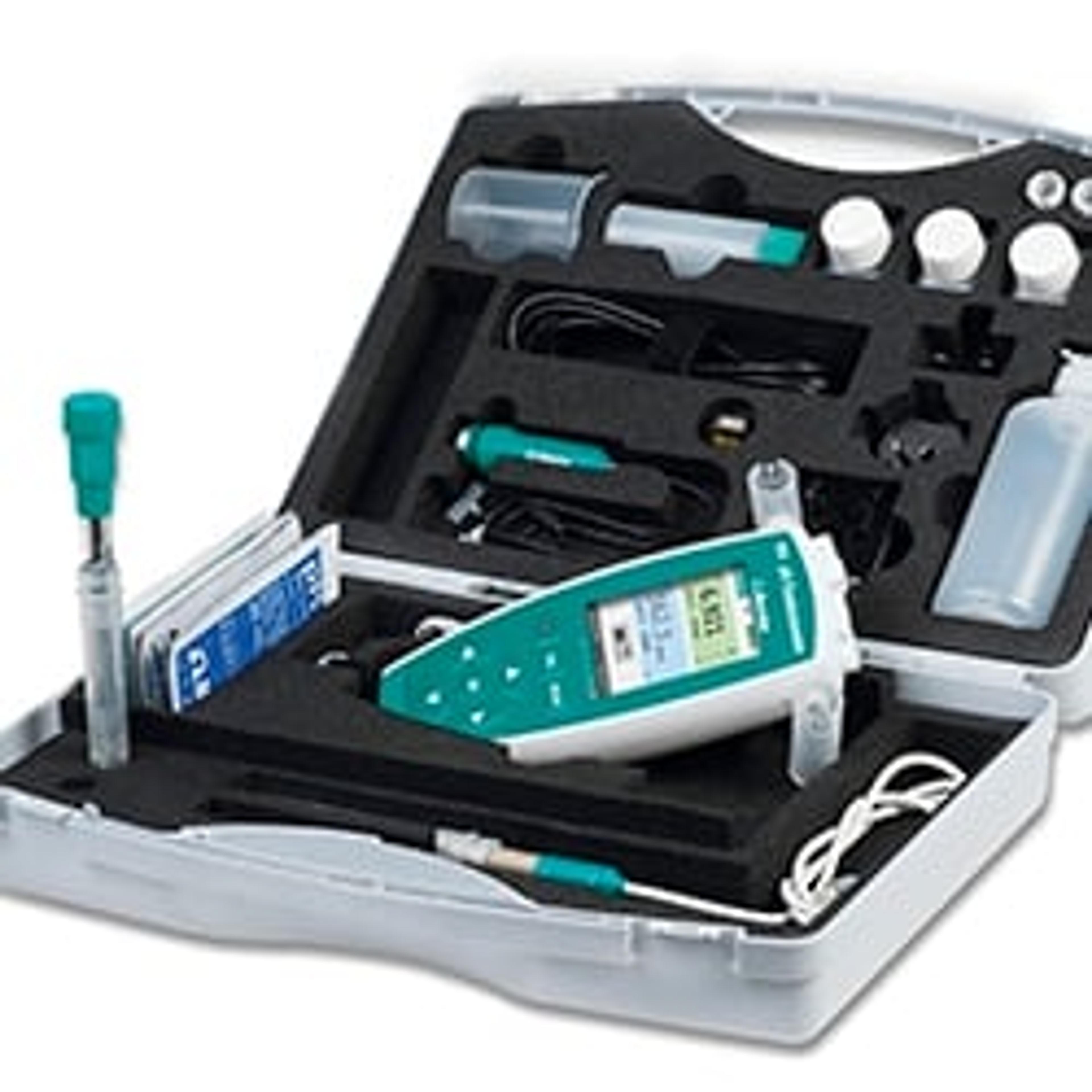pH Measurement: Six Technical Tips
8 Oct 2014
The pH value is one of the most important and therefore also one of the most frequently measured quantities in analytical chemistry. Sometimes, a simple pH test strip is sufficient for making a rapid check; precise pH meters are, however, required whenever accurate measuring results are needed. Such a pH meter is available in nearly every laboratory and is generally ready for use at a moment's notice. The measured pH value can be read off the pH meter directly and can also often be archived immediately in compliance with GLP. However, to verify the accuracy of the measured value, the following points should always be considered before taking a pH measurement.

1. The pH measuring instrument
A pH meter must meet certain prerequisites for optimum accuracy and reproducibility. Depending on the required accuracy, a pH meter should permit multipoint calibration across the pH range in which the pH value of the sample is expected. Additionally, it should enable temperature compensation of the pH value, according to the Nernst equation. It should indicate drifting values in the display and also offer various different options to read the pH value automatically, either after a fixed time interval or – for maximum reproducibility – once a predefined drift criterion is fulfilled. Whether or not a sample is stirred, the best way to obtain reproducible results is to use a firmly installed setup (stand, stirrer, position of the electrode in the measuring vessel).
2. The pH electrode
The selection of a pH electrode should be based on the characteristics of the sample (pH value, temperature, consistency, matrix). Particular attention should be paid to selecting a suitable reference electrolyte and diaphragm. The most universal diaphragms are the sleeve diaphragms. They consist of two perfectly ground glass surfaces, allowing a well-defined electrolyte outflow. They therefore show significant advantages: besides the optimized, circular geometry, these diaphragms are virtually insensitive to contamination and have a much better signal stability. The highest level of comfort can be achieved with the sleeve diaphragm and easyClean technology. The sleeve diaphragm can be opened for cleaning by simply pushing the electrode head. An internal spring mechanism ensures that the sleeve is pulled back with very high reproducibility to ensure an equal electrolyte outflow – and herewith very reproducible results – for each measurement.
3. Calibrating the measuring system
The quality of a pH measurement depends on the calibration of the measuring system (pH meter and pH electrode). The rule of thumb: the more exacting the accuracy requirements, the greater the amount of buffer solutions necessary for calibration. The pH value of the sample should be within the pH range covered by the buffer solutions. Buffer solutions below pH 7 are usually very stable, but buffers with pH values higher than 9 are sensitive to carbon dioxide uptake from the air. Therefore, only fresh buffers should be used. Depending on the frequency of calibration, either bottles with larger volumes or sachets for single use are available. Important: Never use used buffer solutions! They might have been contaminated in former calibrations.
4. Temperature-dependence and stirring
Both the measured pH value and the time required to obtain a stable value are dependent on many factors. If the temperature of the sample changes during the measurement, this can cause the pH value to drift unless the measuring instrument used is equipped with temperature compensation. In order to obtain a pH value that is representative for the sample, nonhomogeneous solutions should be stirred in advance of (or ideally during) the measuring process. The stirring rate and the position of the pH electrode inside the measuring vessel can, however, also have an effect on the result.
5. Cleaning
The pH electrode should be cleaned at regular intervals with suitable cleaning solutions. For aqueous samples, rinsing with deionized water is usually sufficient. When the sample contains other contaminants, such as proteins, precipitates, fats, etc, then use a suitable solvent or cleaning solution to remove the contamination. If rinsing alone is not sufficient, then dip the electrode in the cleaning solution for some hours. Important: the filling opening for the electrolyte has to be closed for this and reopened after cleaning. After such a treatment, allow the electrode to regenerate in either deionized water or storage or buffer solution. It is, however, also important to minimize contact during cleaning of the sensor to avoid mechanical damage.
6. Storage
Storing pH glass electrodes filled with 3 molar KCl solution as reference electrolyte is controversial; since potassium ions promote the aging of the glass membrane, resulting in a slower response time, the optimum storage solution for glass would be deionized water to keep the hydrated layer ideally conditioned. However, deionized water dilutes the electrolyte solution in the diaphragm and changes the ionic strength locally. The diaphragm would need to be reconditioned before use, which can take some time. So, for the diaphragm, the ideal electrolyte solution is one that keeps the electrode ready to use. The answer to this controversial issue is an alkali-free storage solution: the pH membrane remains ready to use and the diaphragm does not need to be conditioned for measurement. Electrodes with a reference electrolyte other than 3 molar KCl solution should be stored in the reference electrolyte used.
Written by Christian Haider, Metrohm


